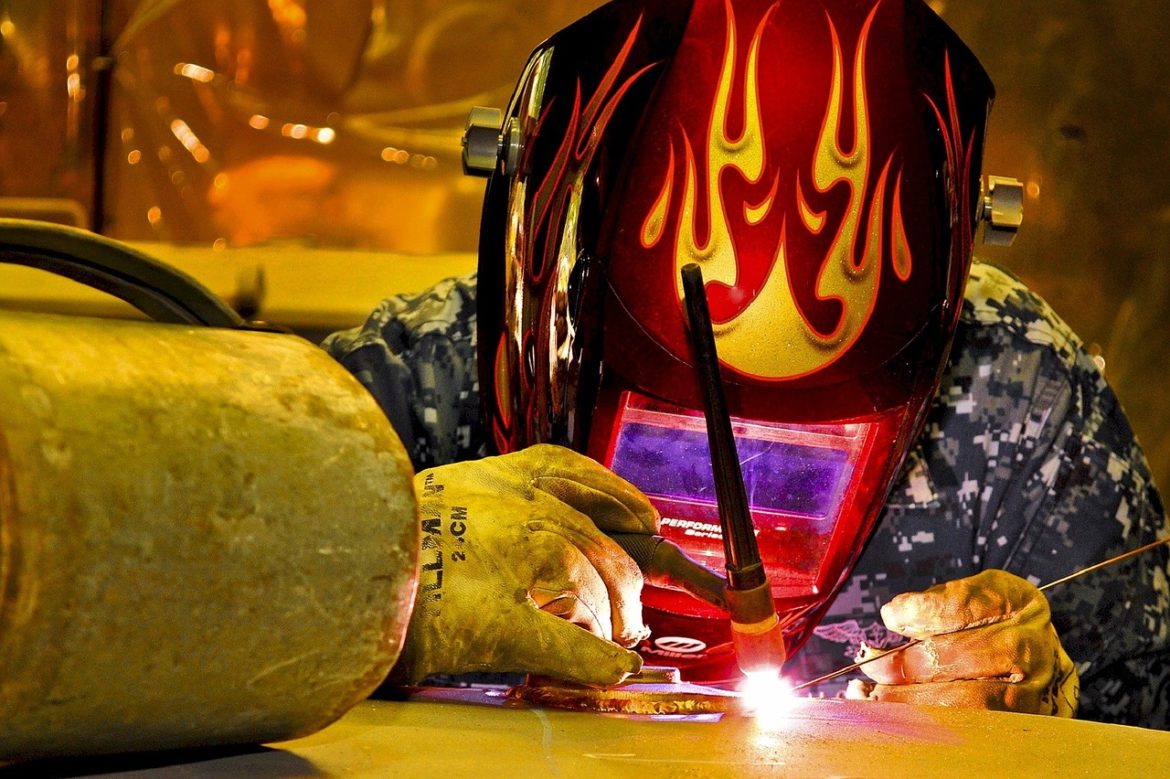
A welding helmet is arguably the most integral piece of protective equipment a welder must use.
Aside from physically covering your face from sparks, a welding helmet also protects your vision from dangerous infrared and ultraviolet rays, which are emitted when welding.
When selecting the correct welding hamlet for your needs, it’s essential to secure the right one for your needs and budget.
However, when it comes to choosing, you’ll find there are 2 main types to choose from. These are auto-darkening helmets and passive welding helmets.
This guide will break down the 2 types to help you decide what is right for you.
1. Auto-Darkening Helmets
Auto-darkening welding helmets are equipped with an auto-darkening filter lens.
The helmet will also have multiple light sensors, also known as arc sensors, that identify the required filter shade that needs to be used.
These sensors are conveniently mounted on the helmet’s side ridges and actively detect light emitted from the welding arc. A quality welding helmet will have around 3 to 6 arc sensors. You get better coverage when you have more senors for times when you are out of position and sensors can be blocked.
The helmet will trigger the lens to darken, utilizing a set of shades, ranging from 8 up to 13.
Also, when the helmet is left facing down, your view will not be obstructed as it is designed to allow clear vision through the light lens to enable you to observe your weld process.
An auto-darkening welding helmet is an ideal option as it alleviates the need to manually change filters, allowing you to work continuously until the job is done.
Additional Features of Auto-Darkening Helmets
Functionality Controls
Aside from the lenses, these helmets allow users to configure sensitivity settings and other configurations to best suit your comfort needs. Some even feature added measures to keep you cool and protected from intense heat as you weld.
Comfortable and Light
Despite its appearance, these helmets are well-fitting and comfortably wrap around your head. Loose and heavy helmets can prove to be stressful amidst your welding process, which is why auto-darkening helmets come in various sizes to match your structure adequately. The gear’s inner linings are soft and provide cushioning support to your cheekbones, neck, and spine.
Automatic UV or IR Darkening Filters
The mechanics behind these helmets are designed to protect bright arc light. These polarization filters automatically darken depending on the penetrative power of the UV and IR rays emitted; ultimately, providing optimal eye protection.
Cost of Replacement Lens
Premium replacement lens for an auto-darkening helmet can cost anywhere between $85 to a couple of hundred dollars, depending on the product’s make and specifications.
Pros
- Adequately masks your face against harmful rays
- Provides exceptional welding protection
- Comes featured in an electronic lens filtering system that automatically darkens to match the light spectrum emitted on the arc
A selective range of filters from 8 to 13 - High-grade LCD screen to allow manual adjustments to sensitivity and shade level configurations.
Cons
- Expensive than traditional welding helmets
- Usually runs on batteries and requires a constant resupply
- Replacement parts are costly to secure.
- View darkens during the first time the arc sparks.
2. Passive Welding Helmets
Passive welding helmets are fixed with inbuilt shade lenses, commonly a number 10 shade. However, helmet manufacturers may vary the lens number, depending on the brand.
They are the most common welding helmet type on the market. The lenses are comprised of standard glass and are coated to protect the user against infrared and ultraviolet ray emissions. When welding, one needs to nudge the helmet to reposition the torch and analyze their work during each weld.
Cost of Replacement Lens
Due to the helmet’s affordable nature, the price of securing replacement lenses can cost anywhere between $10 and $60.
Pros
- Passive helmets are reasonably cheaper than auto-darkening lenses
- Ample face and head welding protection
- Sufficient and optically more precise viewing
- Easily replaceable and affordable lenses or replacement parts.
- Doesn’t run on batteries nor does it feature any technical controls
- Glass lens coated with IR and UV protection
Cons
- Hard to use in tight and restricted spaces as the helmet can only face up or down, causing it to be difficult working in little room
- The action of moving the helmet up and down repeatedly incurs discomfort and pain in your neck
- The helmet requires manual assistance when lowered, or lifter after the welder is lit.
- It requires some multitasking when aligning the torch and raising/lowering the helmet simultaneously
- Not ideal for beginners
In Summary
Whether you opt for an auto-darkening or passive welding helmet, you need to consider each helmet’s pros and cons to guarantee that you select the most suitable option for your welding needs.
